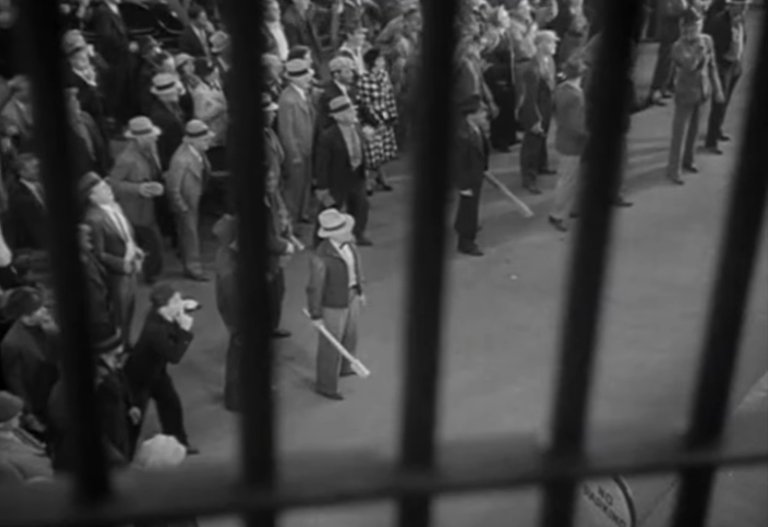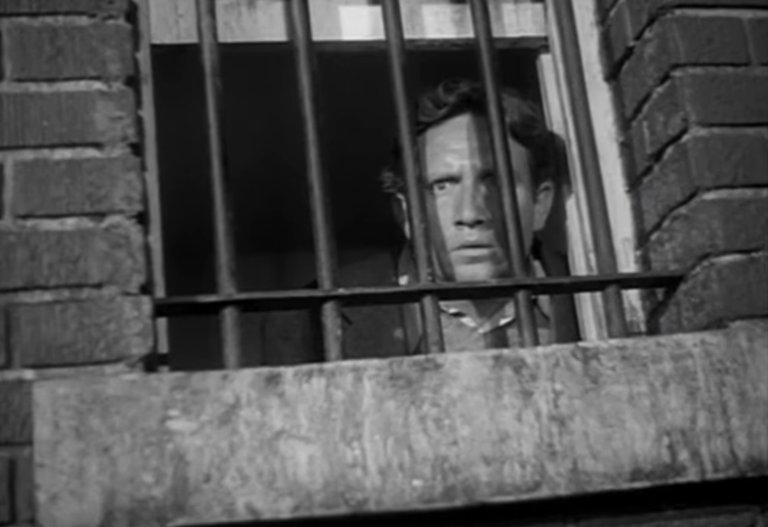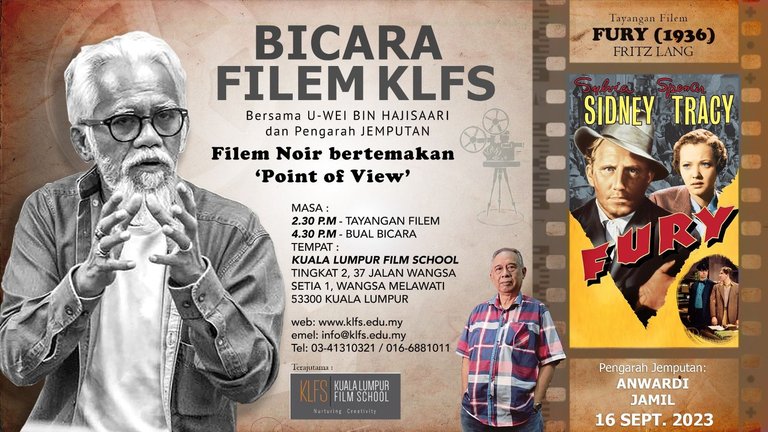THE QUESTION OF POINT OF VIEW


A few days ago there was a session by the Kuala Lumpur Film School and there was the screening of the classic noir film Fury by Fritz Lang. If I can recall correctly, this film was made even before the birth of the 'Noir' film genre, so Fritz Lang started something back then.
The theme of the session was 'Point of View' (POV) but there was very little or none of the discussion around the topic. The excitement was about the noir genre and its history, which was a lesson, in itself.
In the book 'Understanding Movies' by Louis Giannetti (2005), he listed the few main types of POV. (1) the first person, (2) the omniscient, (3) the third person, and (4) the objective.
It says, "Many films use first-person narrative techniques, but only sporadically." I think it refers to us the viewer usually taken for a ride through different POVs throughout the length of a film. And most of the time we are taken to look into the overall picture, which is the omniscient or the objective POV, in which the book says, "Omniscient narration is almost inevitable in film. Each time the director moves the camera—either within a shot or between shots—we are offered a new point of view from which to
evaluate the scene."
FURY (1936)
Personally, I think this film comprises of a few POV. (like what the above quote says about POV in film.) The main one is of the protagonist, who is happy in the beginning but suffers in justice near the end.
The second one is from the fiance's POV where she suffers from seeing the shift in the personality of her partner and how the surrounding society mob lynching him.
The third one is from the society's perspective where mostly influenced by hearsay and the media.
There is a fourth one which is the film cameras. They recorded the riot where the footage eventually acted as the evidence and affected the final verdict. (Fritz Lang saw the power of the screen and now we see it as another pair of 'eyes' in society.)
And there is a related thing about that from the book.
"The cinematic equivalent to the “voice” of the literary narrator is the “eye” of the camera, and this difference is an important one. In literature, the distinction between the narrator and the reader is clear: It’s as if we were listening to a friend tell a story.
"In film, however, the viewer identifies with the lens and thus tends to fuse with the narrator. To produce first-person narration in film, the camera would have to record all the action through the eyes of the character, which, in effect, would
also make the viewer the protagonist."
SAVING PRIVATE RYAN
Also yesterday I saw a post by Al Jafree Md Yusop about William Goldman's critique of the POV of Spielberg's Saving Private Ryan. It is about the intro where the old man's face fades into Omaha Beach landing and the close-up of Tom Hanks' character.
Personally, I remember watching it back then on the big screen and really thought that Tom Hanks and the old man were the same person.
Intuitively as a normal audience, I was thinking that Spielberg is trying to show that the old man is Tom Hanks. But near the end of the film, we finally know that Ryan is actually the old man. The title itself could be from Tom Hanks' character's POV or the narrator's telling us what the story is about - the journey of saving a soldier called Ryan.
Yet the transition from thinking Tom Hanks is the old man into Matt Damon happens so smoothly that I did not realize it up until the very end. Only a scholar on a subject like William Goldman would spot the flaw. Yet Spielberg is no fool either.
On YouTube, I have found an old interview where Spielberg said, "Saving Private Ryan was never meant to be thrilling, or an adventure. It was meant to be a re-creation, a documentation of the closest I could get to the experiences of those who fought there on June 6th."
So personally, I think the POV is general in nature. The whole film is from the perspective of a soldier fighting in that European Theater. Only if we look at the whole film as one entity.
And with the graveyard intro and ending scene is old Ryan with his family and grandkids, also with what Tom Hanks' character said to him at the Alamo ('Earn this. Earn it'), is Spielberg saying to the new American generation to remember and appreciate the sacrifices made. And the film has been shown mostly from the subjective perspective of those soldiers.
Finally, from the book I mentioned earlier, says something similar to Saving Private Ryan's case.
"The filmmaker can cut easily from a subjective point-of-view shot (first person) to a variety of objective shots. He or she can concentrate on a single reaction (close-up) or the simultaneous reactions of several characters (long shot). Within a matter of seconds, film directors can show us a cause and an effect, an action, and a reaction."
"They can connect various time periods and locations almost instantaneously (parallel editing), or literally superimpose different time periods (dissolve or multiple exposure). The omniscient camera can be a dispassionate observer, as it is in many of Chaplin’s films, or it can be a witty commentator—an evaluator of events—as it often is in Hitchcock’s films or those of Lubitsch"
